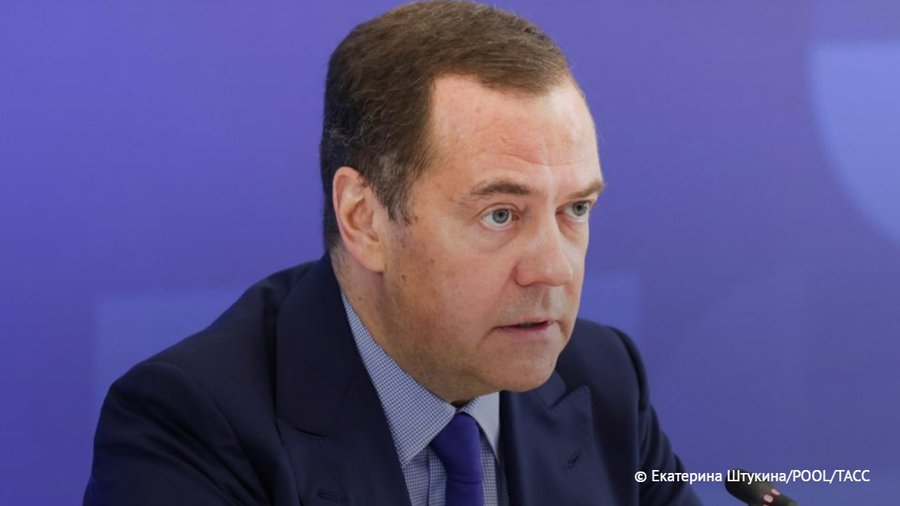Remarkable footage: Putin clearly experiences TARDIVE DYSKINESIA. Can SLE be considered as Putin's provisional diagnosis?
#Remarkable footage: #Putin #clearly experiences #TARDIVEDYSKINESIA, which is THE SIGN OF USING THE #ANTIPSYCHOTICMEDICATION.
— Michael Novakhov (@mikenov) July 20, 2022
Is he psychotic (off meds)?
Is he a #CRAZY, #PSYCHOTIC man?
Erdoğan keeps Putin waiting in awkward moment ahead of #TehranTalks https://t.co/CNEy9MsR0h
I misspelled the name of the symptom in the previous posts. It should be: #Dyskinesia - abnormal kinesis, movements;
— Michael Novakhov (@mikenov) July 20, 2022
Tardive: after many years of antipsychotic use,
Oral: around the mouth.


Vladimir Putin, President of Russia, attended an Easter ceremony in Moscow this week, and cameras caught him trying to control involuntary mouth movements. This is fueling more rumors that he may be suffering from a common neurodegenerative condition.
69 year-old Putin had been observed for years to have a decrease in extremity movement fluidity and gait insinuating progressive stiffness, prompting rumors he could have Parkinson’s.
The Kremlin has repeatedly denied the claims, saying they are “nonsense” and he is in “good health.”
Lower lip movements, or oromandibular dystonia, at rest can be a sign of Parkinson’s.
They may also be a sign of anxiety as one might bite their lip when nervous.
Tardive dyskinesia, involuntary movements of the face and jaw, can also be a consequence of medications used to treat psychosis or disorders of the brain including Parkinson’s.
Hence a neurological condition or medications to treat a neurological condition can cause some of the repeated lip movements seen in the above video.
This week an additional video surfaced of Putin in a televised meeting with his defense minister Sergei Shoigu discussing the plan to block off the Ukrainian Azovstal steel plant in Mariupol rather than sending in Russian troops to navigate the catacombs.
 Image from MSN
Image from MSNIn the video, Putin is sitting in a very tense, awkward position with his right hand griping the desk. His thumb moves but his hand remains fixed, despite the tendency to use hand gestures when speaking.
This might be an attempt to prevent a pill-rolling tremor that occurs at rest when one has Parkinson’s.
Daily Mail posted a video of his right hand shaking uncontrollably in February.
This is a far cry from Putin’s use of right-handed gestures when he spoke four months ago.
And much farther cry from his fluidity when he spoke publicly four years earlier.
Additionally reports have suggested Putin has cancer, specifically thyroid.
Either way, Putin appears more bloated, pale and less confident than he did 4 years ago suggested a rapid deterioration of his health.
 Fifa World Cup 2018
Fifa World Cup 2018This is a developing story….
What is Parkinson’s Disease?
Parkinson’s disease is the second most common neurodegenerative disorder, next to Alzheimer’s, and the most common movement disorder that affects 1% of the world’s population over 60 years old. In the US, 60,000 new cases are diagnosed each year. It affects several areas of the brain, primarily the substantia nigra, altering balance and movement by affecting dopamine producing cells.

IMAGE FROM THE SCIENCE OF PARKINSON’S DISEASE
It was first described in 1817 by James Parkinson as a “shaking palsy.”
What are the Symptoms of Parkinson’s?
Common symptoms of Parkinson’s include:
- Stiffness and rigidity
- Poor balance
- Tremor at rest, especially a pill-rolling tremor
- Slow movement
- Inability to move
- Shuffling steps, gait
and patients may later develop…
- Depression
- Anxiety
- Memory loss
- Constipation
- Decrease ability to smell
- Difficulty swallowing
- Erectile dysfunction
- Pneumonia
- Fractures from falling
- Hallucinations
- Delusions
- Dementia
Who is at Risk for Parkinson’s?
Most cases are idiopathic, meaning the disease arises with no specific cause. However some cases are genetic and multiple genes have been identified that are associated with the disease.
The average age of onset is 60, but some cases may occur as “early onset”, before the age of 50, and if before the age of 20, it is known as juvenile-onset Parkinson’s.
Men appear to be more affected than women at twice the rate.
Risk may be enhanced with a history of head trauma.
Exposure to herbicides and pesticides has been linked to an increase risk of Parkinson’s as well.
How Quickly do Parkinson’s Symptoms Progress?
Average progression rates can last years to decades, however, earlier onset disease may manifest much quicker.
The stages of Parkinson’s are illustrated below:

How is Parkinson’s treated?
Although there is no cure for Parkinson’s, symptoms can be treated by a variety of measures.
- Levadopa – converts to dopamine in the brain, helping replace the deficient hormone.
- Carbidopa (Sinemet) – if given with levadopa prevents the latter from being broken down before it reaches the brain.
- Dopamine agonists – mimic dopamine
- MAO-B inhibitors – helps block the enzyme MAO-B, which breaks down natural dopamine
- Other medications including COMT inhibitors, amantadine and anticholinergics
- Medications to treat anxiety and depression
- Deep brain stimulation – a surgeon implants electrodes into the brain, allowing stimulation of parts that help regulate movement.
- Stem cell therapy – being investigated as a means to create dopamine-producing cells
- Physical and occupational therapy
Famous People Diagnosed with Parkinson’s
- Michael J. Fox
- Janet Reno
- Robin Williams
- Muhammad Ali
- Casey Kasem
- Johnny Cash
- Linda Ronstadt
- Pope John Paul II
- Peanut’s creator Charles Schulz
- Rev. Jesse Jackson
- Neil Diamond
- Ozzy Osbourne
It’s been postulated Adolf Hitler suffered from Parkinson’s as well. His left hand tremor can be seen here.
























 US adds Russia to human trafficking, child soldier lists.
US adds Russia to human trafficking, child soldier lists.














 Ꚙ
Ꚙ

















































 Olena Zelenska via Facebook.
Olena Zelenska via Facebook.



 via Zelenska
via Zelenska














Comments
Post a Comment